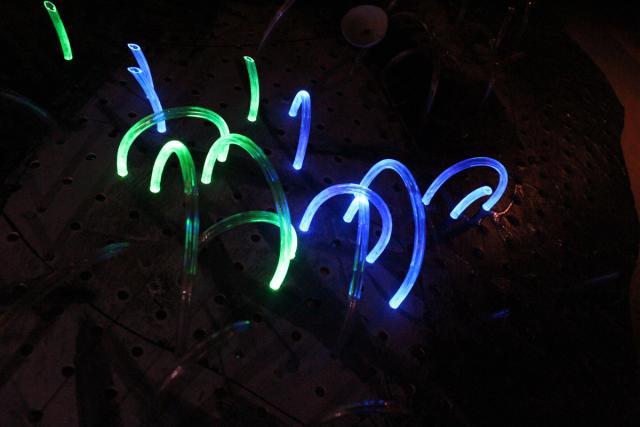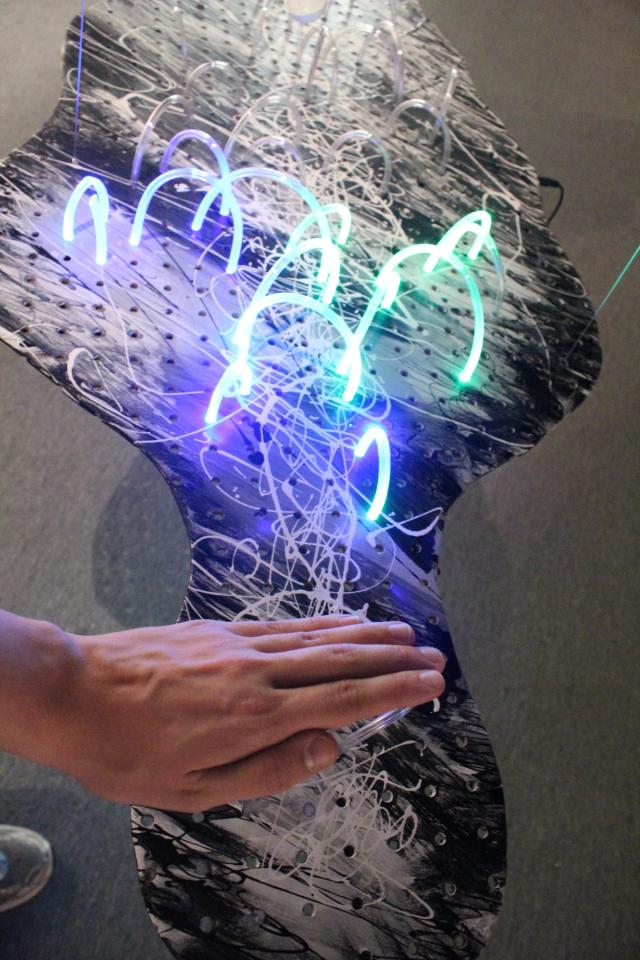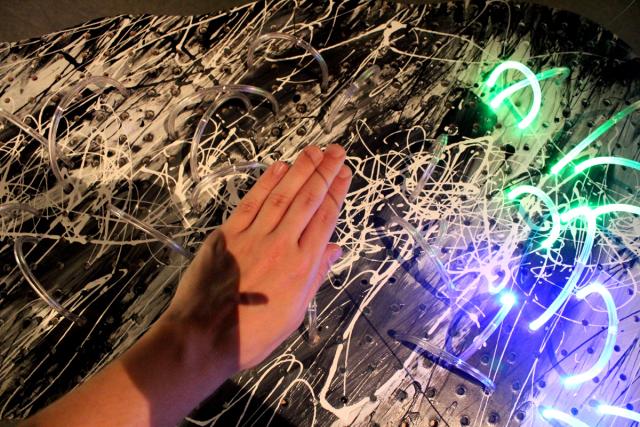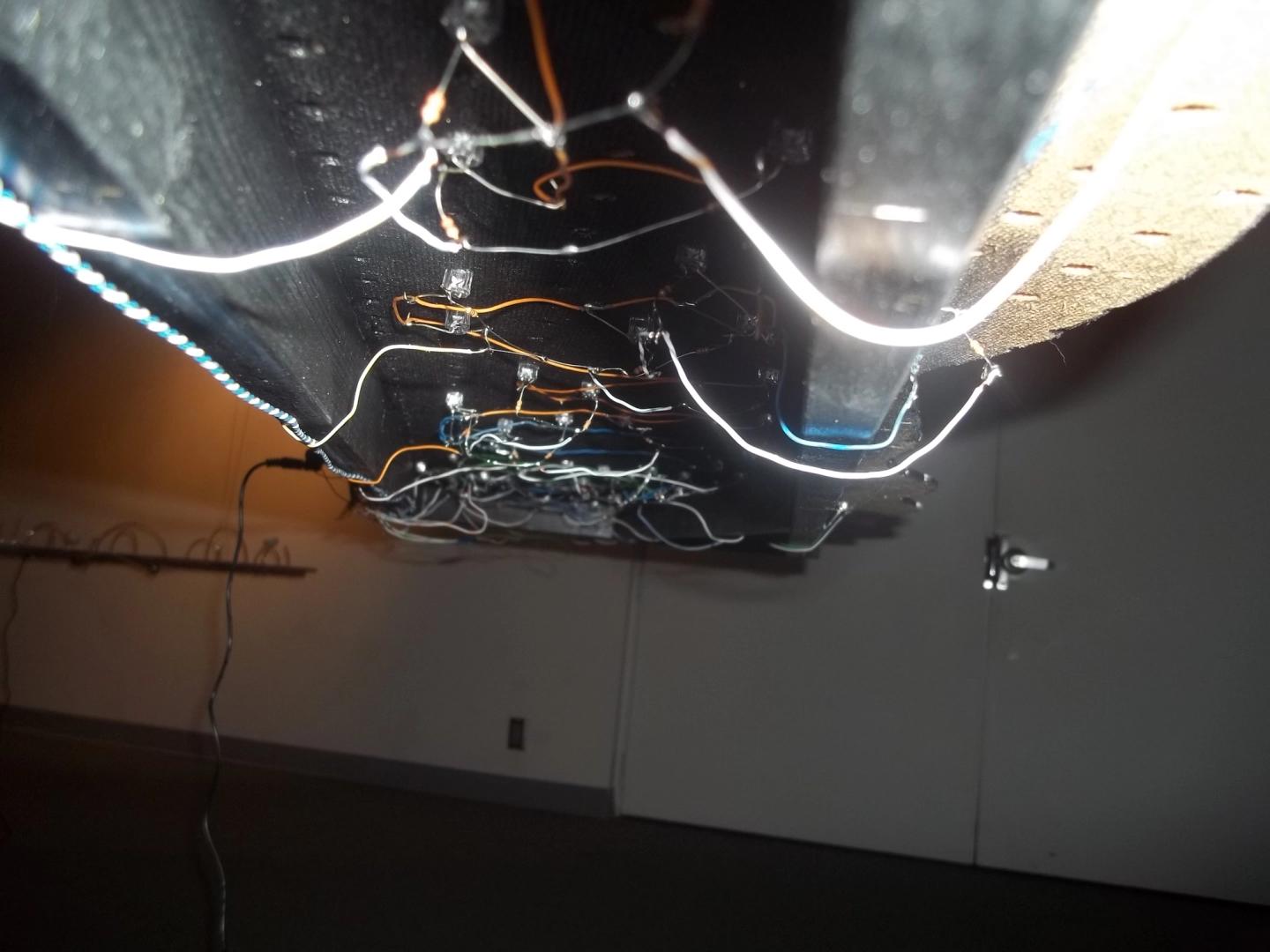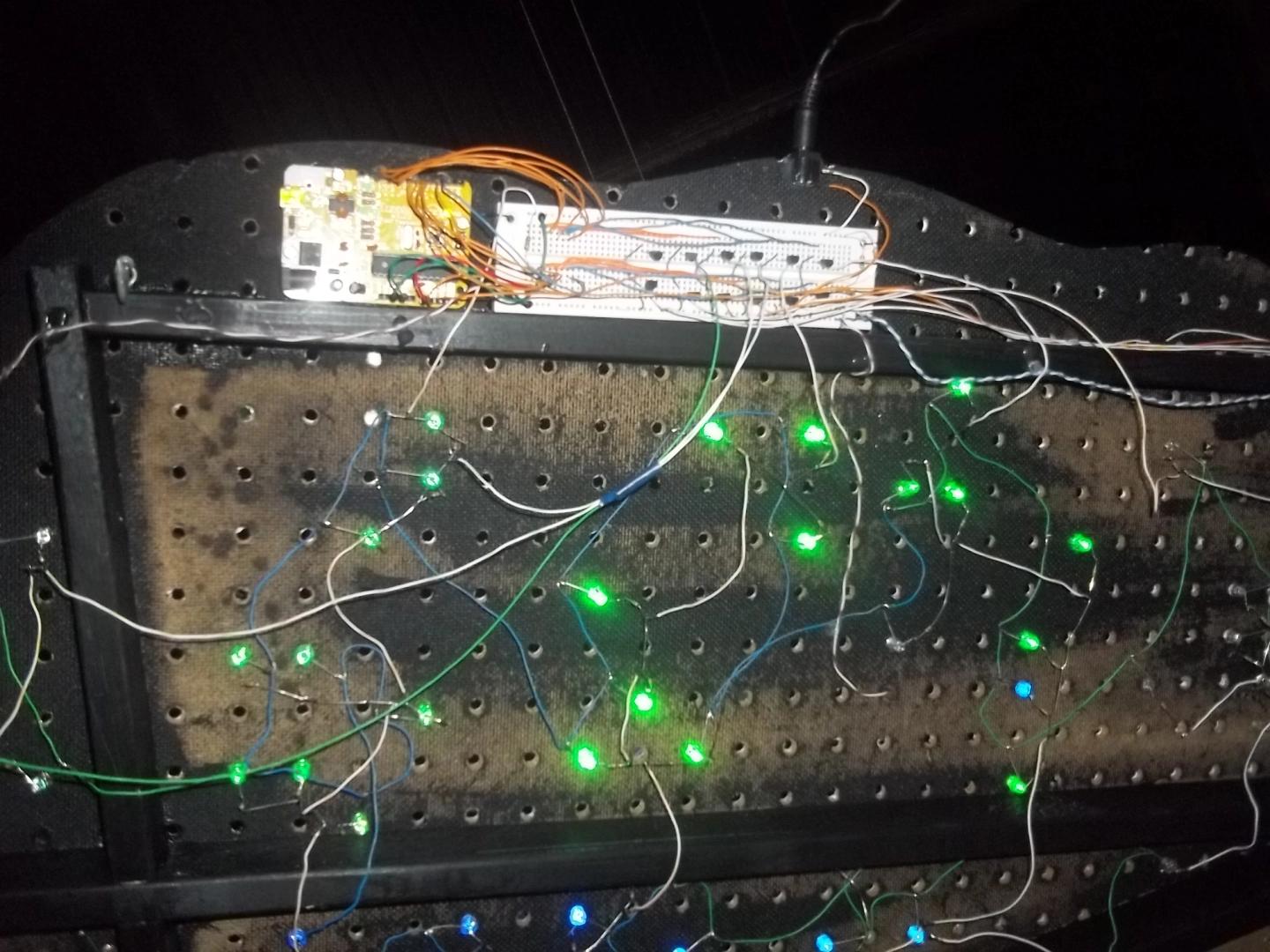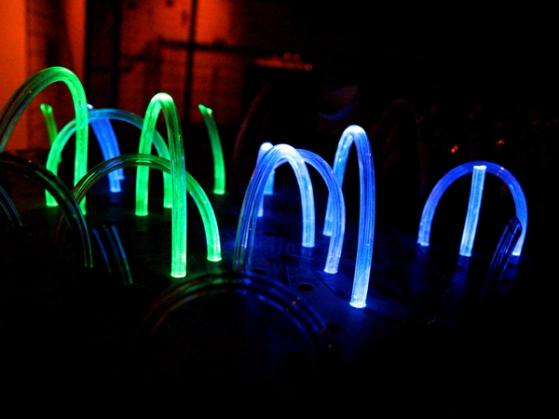
Tube Gardens for Artist in Residence show
This project was built as part of an art exhibition created with Mark Hartman, Associate Professor at UNK. Each humanoid wood form was illuminated with LEDs installed inside of clear tubing that crisscrossed the surface.
Light sensors installed at either end of each form allowed visitors to interact with the lights in real-time, facilitated by an Arduino microcontroller. By covering up or shining light onto these sensors, visitors could trigger playful waves of light that travelled across the surface of the pieces.
